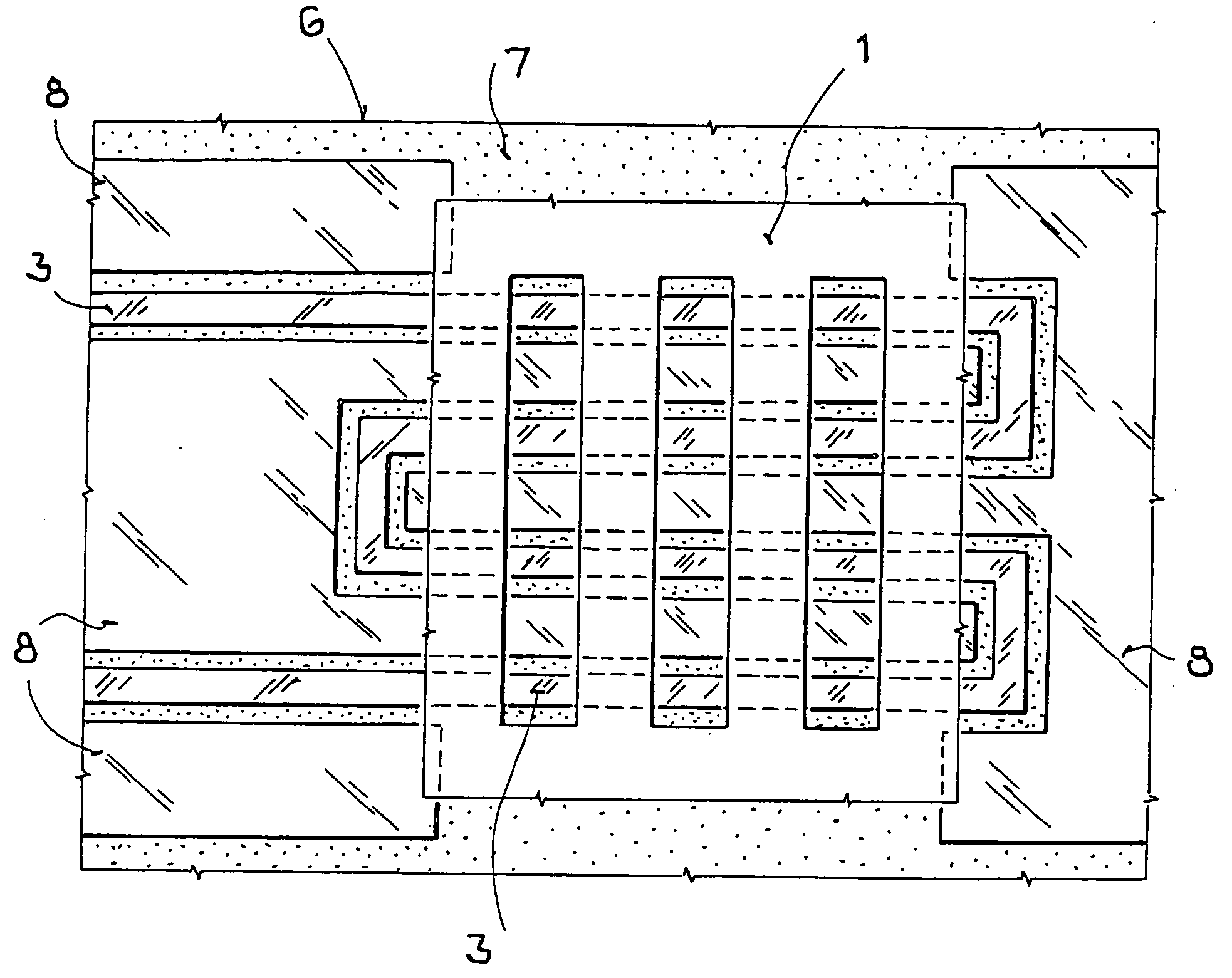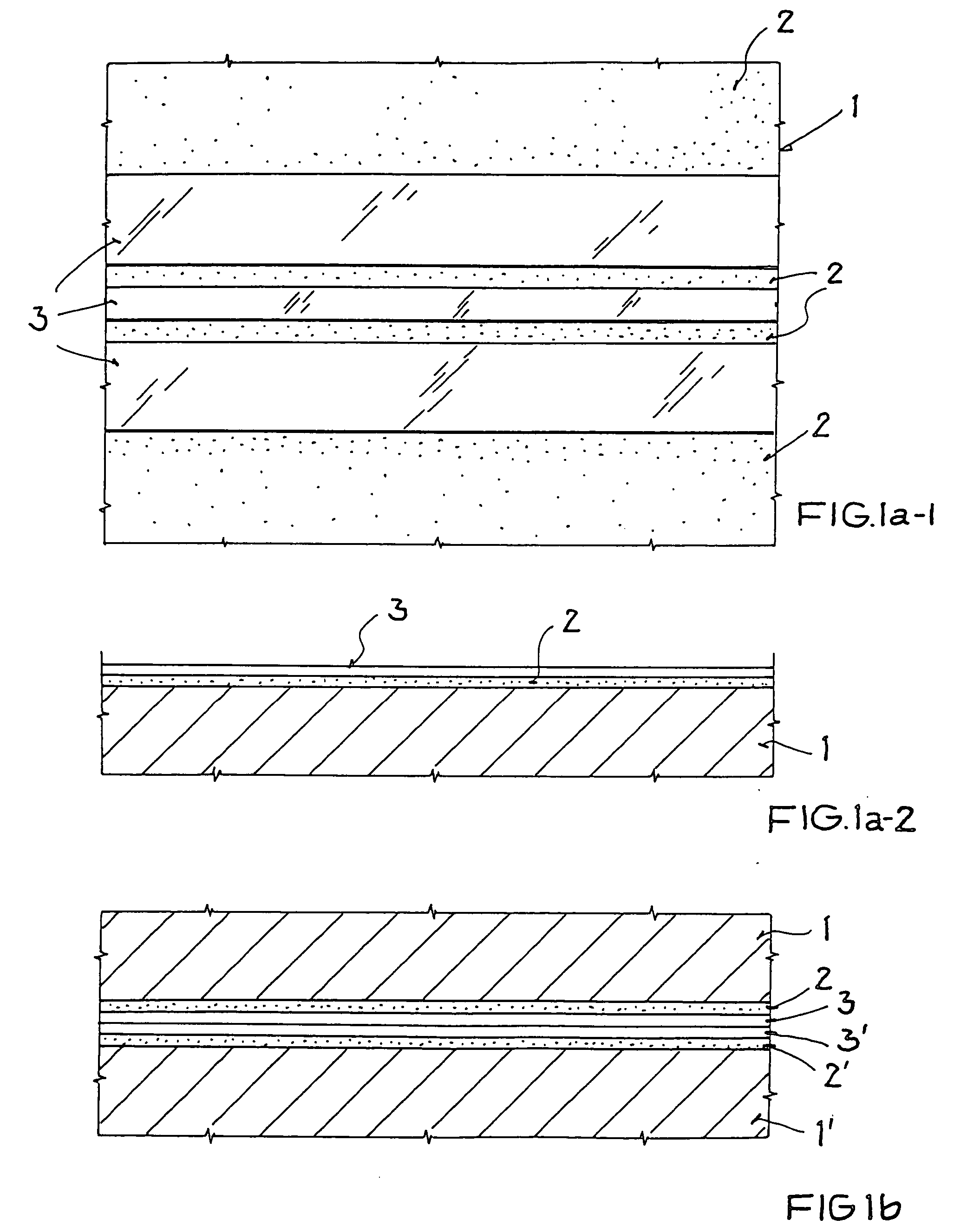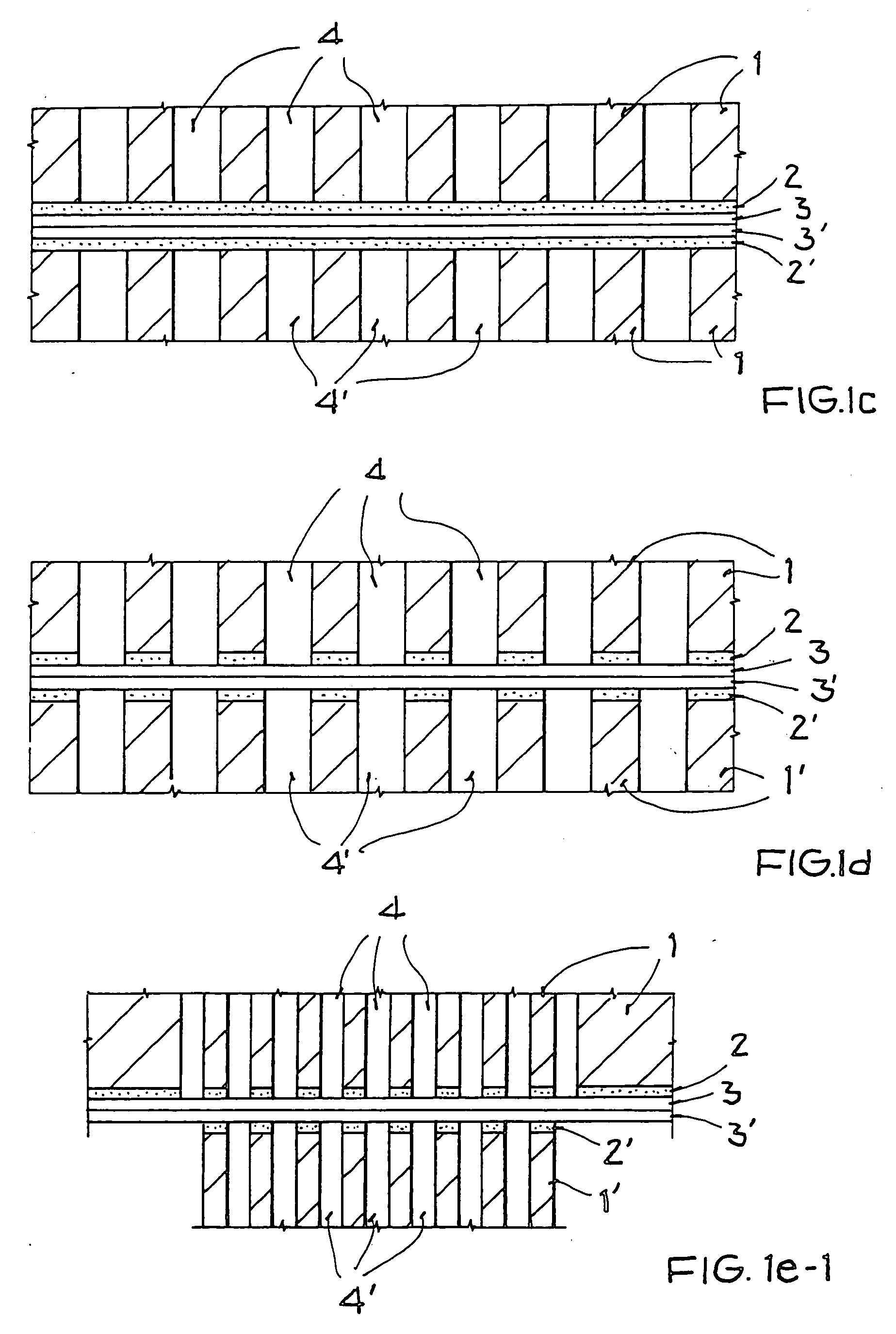Method for forming a photonic band-gap structure and a device fabricated in accordance with such a method
a technology of photonic band gap and fabricated device, which is applied in the direction of waveguide type devices, instruments, optical elements, etc., can solve the problems of incompatible silicon-based technology, large structure size, and high cost of conventional methods for producing such a resonator, so as to achieve simple and cost-effective production and reduce the dimension
- Summary
- Abstract
- Description
- Claims
- Application Information
AI Technical Summary
Benefits of technology
Problems solved by technology
Method used
Image
Examples
Embodiment Construction
[0034] Identical reference numerals in the figures designate substantially identical components, or components with substantially identical functions, unless indicated otherwise.
[0035] With reference to FIGS. 1a-1 to 1e-2, the individual method steps for producing a PBG structure in accordance with an example embodiment of the present invention are described in detail.
[0036]FIG. 1a-1 illustrates a top view and FIG. 1a-2 is a cross-sectional view of a substrate 1, on which a barrier layer, for example, a dielectric insulating layer 2, is formed. The dielectric insulating layer 2 can be, for example, 300 nm thick and can be made of silicon nitride or silicon dioxide. It will be obvious to one skilled in the art that other dielectric insulation materials can also be used. Furthermore, it is also noted that, the barrier layer 2 can also be omitted.
[0037] In a subsequent step, a structured coplanar waveguide metallization 3 is formed over the dielectric insulating layer 2 using, for e...
PUM
| Property | Measurement | Unit |
|---|---|---|
| thick | aaaaa | aaaaa |
| aspect ratio | aaaaa | aaaaa |
| resonance frequency | aaaaa | aaaaa |
Abstract
Description
Claims
Application Information
 Login to View More
Login to View More - R&D
- Intellectual Property
- Life Sciences
- Materials
- Tech Scout
- Unparalleled Data Quality
- Higher Quality Content
- 60% Fewer Hallucinations
Browse by: Latest US Patents, China's latest patents, Technical Efficacy Thesaurus, Application Domain, Technology Topic, Popular Technical Reports.
© 2025 PatSnap. All rights reserved.Legal|Privacy policy|Modern Slavery Act Transparency Statement|Sitemap|About US| Contact US: help@patsnap.com



